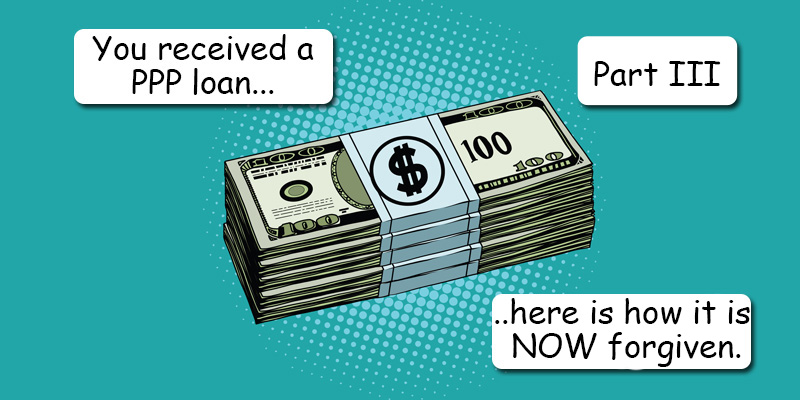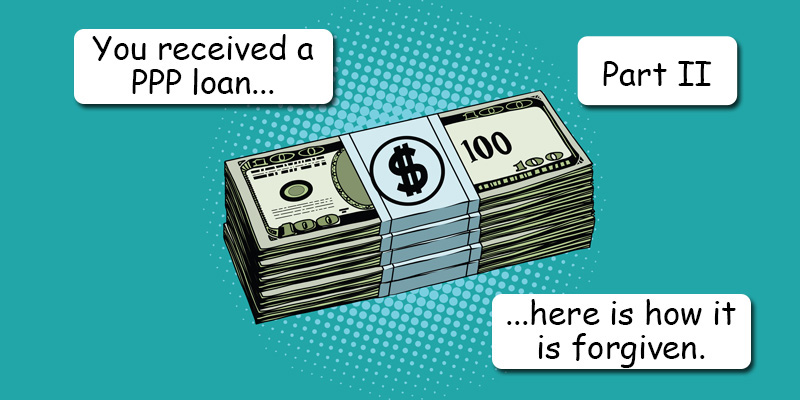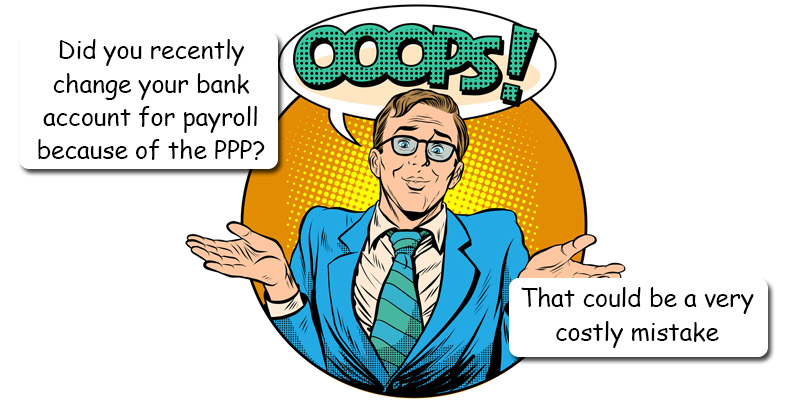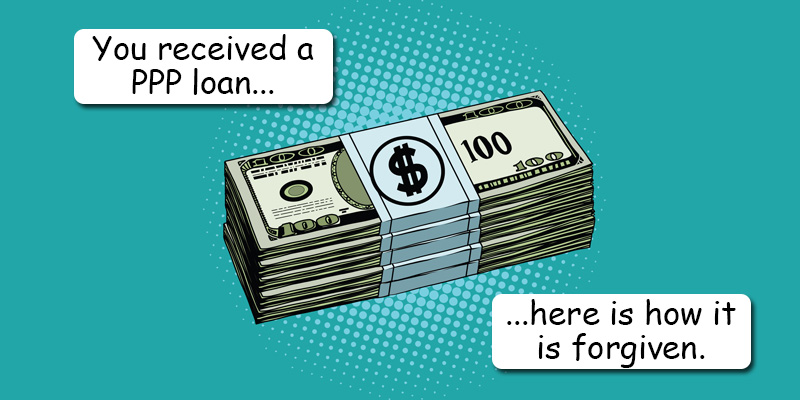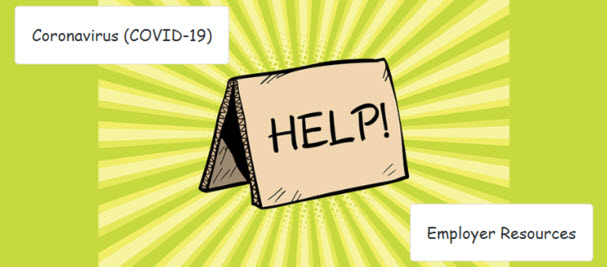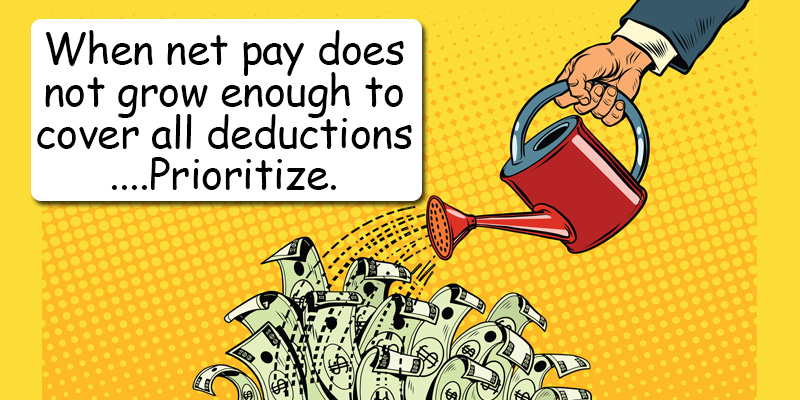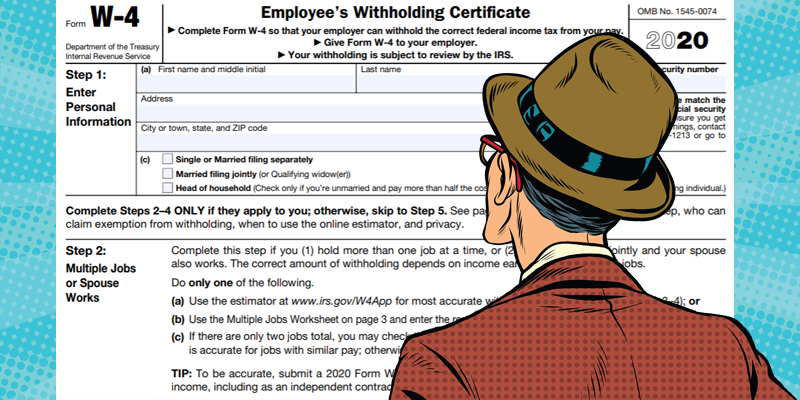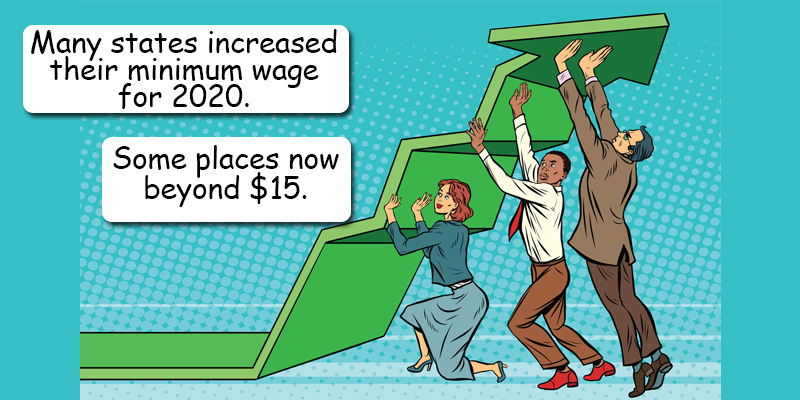Yes, you have read that correctly. It is the PPP Flexibility Act of 2020. Why the need to include “2020?” Are they expecting a PPP Flexibility Act of 2021, 2022, and so on? The Paycheck Protection Program itself was not designed to last beyond 2020, so hopefully this is not a bad sign of what is ahead. Let’s take a moment to see how this latest Act impacts those who will be looking for forgiveness on their loan. I will assume you already understand basic PPP terms such as ‘payroll costs,’ ‘covered period,’ and FTE, but if you need a…
Posts published in “Uncategorized”
The Small Business Administration (SBA) has released the Loan Forgiveness Application, which has provided answers to many previously-vague conditions of forgiveness. One problem is that for many, these instructions come towards the end of their eight-week loan proceeds spending and may be too late. I saw one article state that the loan application failed to provide instructions as to how to build a time machine to go back in time to correct what might have already been done. We may see a spike in Delorean resales! Rather than repeat what I have provided in the first article https://blog.paymaster.com/sba-paycheck-protection-program-ppp-loan-forgiveness/ , I…
Did you change your bank account with your payroll service because of the PPP? That could be a costly mistake.
0This is super important to read and understand how changing the bank account normally used for payroll to a new bank account that was opened to solely hold your PPP funds is going to produce unwanted results. We have found that a large number of companies, over the past few weeks, have requested to change the bank account in which their payroll is drawn. Upon questioning, it is discovered that the change is the result of the business owner receiving their Paycheck Protection Program (PPP) loan proceeds into a brand new separate bank account and wanting their payroll to be…
The Paycheck Protection Program (PPP) of the CARES Act authorizes up to $349 billion in loans to small businesses to pay their employees and other expenses during the COVID-19 crisis. The loan amounts will be forgiven under Section 1106 of the Act as long as certain conditions are met, and knowing those conditions at the start of the loan process is crucial, because if you wait until the end of the process, it will be too late. There are four areas of concern to receive 100% forgiveness. 1. Let’s start with what the proceeds can be used for. Over the…
With the passage of the Families First Coronavirus Response Act, two new refundable payroll tax credits are available to employers with fewer than 500 employees. These refundable credits are designed to fully reimburse them, dollar-for-dollar, for the cost of providing Coronavirus-related leave to their employees. The Act allows two paid leaves for the employee’s own health needs or the care of family members. This will enable employers to keep their employees on payroll and ensure that employees are not forced to choose between their paycheck and the public wellbeing. Emergency Paid Sick Leave Companies with fewer than 500 employees,…
There are times when an employee’s actual gross pay (excluding taxable fringe items) is insufficient to accommodate all of their deductions in full. In those cases where there is not enough net pay, there is an order in which deductions are to be processed until the check is zero. I am going to cover the basics of that order without going into the details of each specific deduction, as this would end up being a super-sized blog. Be sure to check out my previous blogs for details on some of the specific deductions. Deductions are taken in the order below,…
The 2020 Form W-4, Employee’s Withholding Certificate, is very different from previous versions. This is due to the federal tax law changes that took place in 2018 from the 2017 Tax Cuts and Jobs Act. Check out my prior article with a bit of history and nostalgia of a 30 year old form. https://blog.paymaster.com/here-it-comes-2020-w4-form/ The most significant change is that there is no longer the use of withholding allowances, and the form asks the employee to basically prepare an estimated tax return. Some of the information requested may even be considered intrusive, including income from other sources, spouse income, itemized…
Over the next few weeks, as your employees start to receive their 2019 W-2 form, they will most likely have many questions as to what all those numbers mean. For example, it is not uncommon for a salaried employee who earns $50,000 per year question why their Box 1 Wages only reflects $45,000. The response may be, ‘do you contribute to a pension plan or have pre-tax insurance, then if so those amounts reduce your “taxable” wage, which is what appears in Box 1’. To assist you with questions like that, here is a handy guide. Download the 2019 W-2…
While the Federal minimum wage remains at $7.25 per hour,many states and cities/locals have set increases effective January 1st, 2020 with a few announcing a change during 2020, and New York with a December 31st, 2019 increase. A list of each state/local, along with the new hourly rate is listed below; All rates are effective January 1st, 2020 unless otherwise noted. Alaska: $10.19 Arizona: $12.00 ($9.00 for tipped employees) Arkansas: $10.00 (tipped minimum wage will remain at $2.63) California: $13.00 for businesses with 26 or more employees, and $12.00 for 25 or less; Cities marked with an * below will…
Employers who operate in more than one state need to understand the complexity of determining the proper state location for reporting unemployment taxes for each employee. In this article, we will cover the rules and factors utilized by all states to report and pay taxes, which we can break down to a four-step process. We will not cover state income tax here. That is a topic in itself and will be covered in a future article. Before we start, let’s cover the simple scenario. Employee lives in Florida, but each day drives and crosses state lines to work in Georgia…

